Published Jul 19, 2022
From the Moon to the Delta Quadrant: NASA’s Indelible Imprint on Star Trek: Voyager
Let's revisit some of Star Trek: Voyager's space travel episodes!
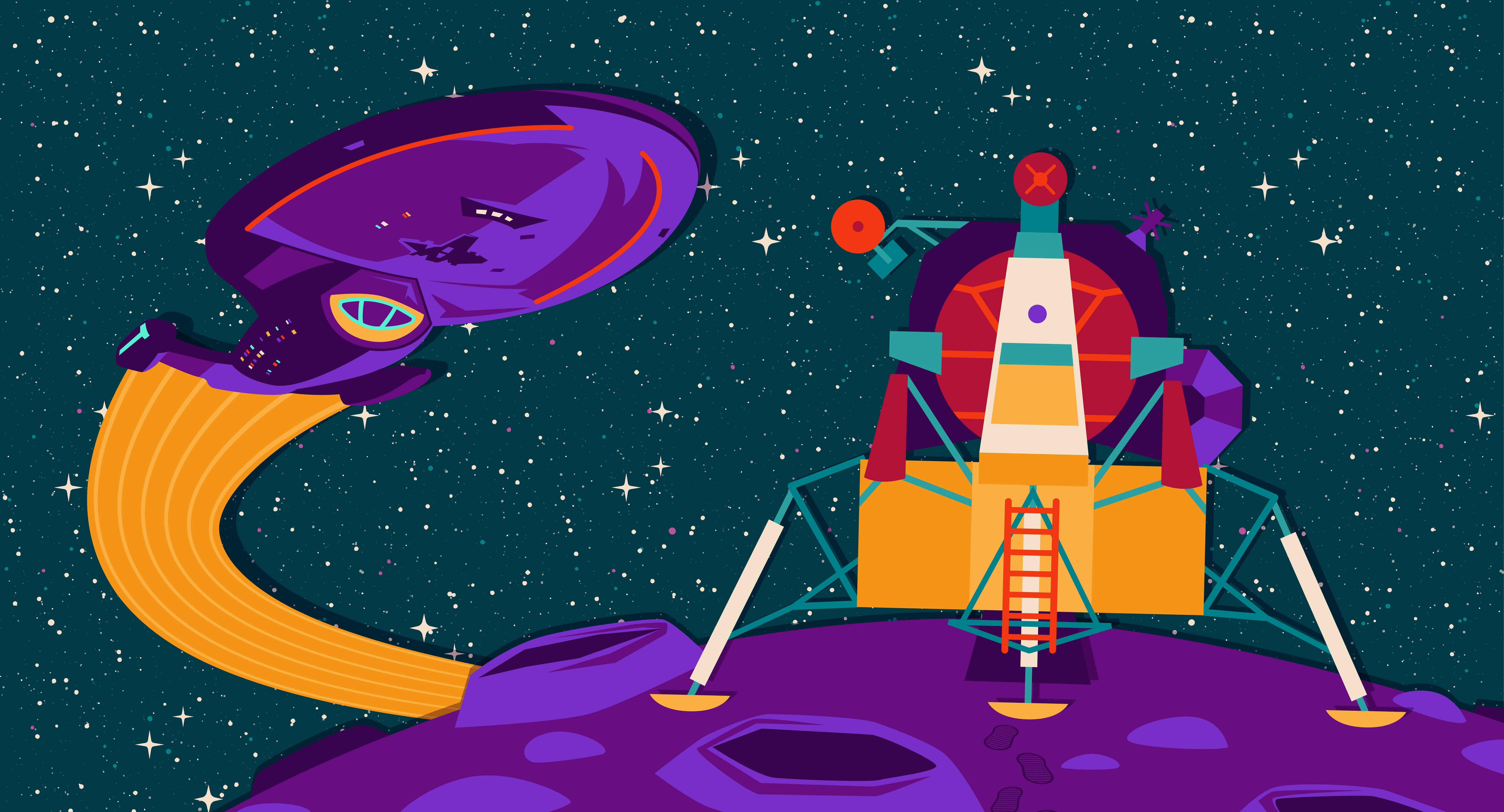
StarTrek.com
Celebrate the anniversary of the successful Apollo 11 Mission to the Moon (July 16-24, 1969) by revisiting early space travel episodes from Star Trek’s most astronaut-focused show, Star Trek: Voyager. From compelling tales of heroic astronauts risking their lives for scientific knowledge, to the story in “11:59” of a 21st Century engineer (and an ancestor of Voyager’s Captain Kathryn Janeway) helping develop building blocks for eventually living on Mars, to episodes featuring the campy monochromatic Captain Proton holo-novel, Star Trek: Voyager returns repeatedly to stories linked to early human space travel, more so than any other Trek.
Reflecting on Star Trek: Voyager’s “astronaut-centered” storytelling helps space nerds like me emotionally connect with the courageous efforts of real-life engineers, scientists, and humanists such as Neil Armstrong, Michael Collins, Sally Ride, and Mae Jemison. Star Trek: Voyager invites viewers into the command module with fictional astronauts, helping us better understand the motivations of our real-life space traveling heroes.
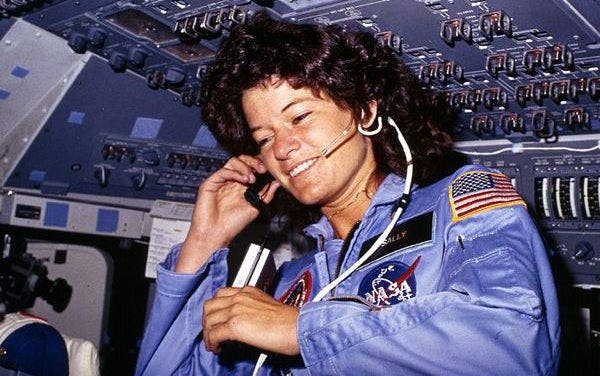
National Archives
As Star Trek fans, we are so fortunate NASA sent writer and astronaut Michael Collins on Apollo 11. His compelling 1974 autobiography Carrying the Fire: An Astronaut's Journeys helped Star Trek creators “see” the extraterrestrial beauty he witnessed in space that they could then translate this experience for us. Many credit Gene Roddenberry’s expansive humanism as the origin of Star Trek’s pro-social core values. From the start, however, Roddenberry and Star Trek creatives were profoundly influenced by Collins, Armstrong, and everyone involved with the U.S. space program.
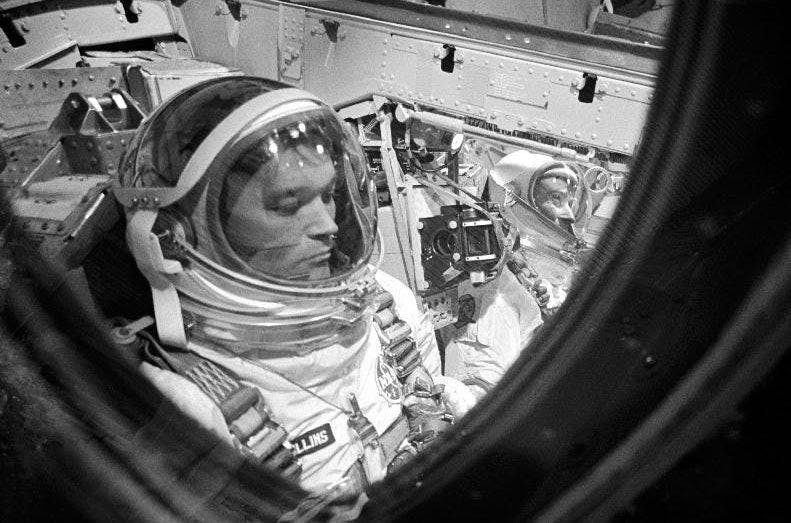
NASA
During the Apollo 11 celebratory world tour following the success of the Moon Landing, Michael Collins observed how proud so many people from countries around the world were with NASA’s achievement. “The thing that really surprised me,” said Collins, “was that everywhere we went people didn't say, 'Well you Americans finally did it,’ They said, 'We did it.' All of us together, we did it. It was a wonderful sensation.” Indeed, the world saying “We did it!” is accurate — advanced math originated in Mesopotamia centuries ago and neither Apollo 11 nor any of the other successful space program missions could have happened without it. All around the globe and across history — united Earth!
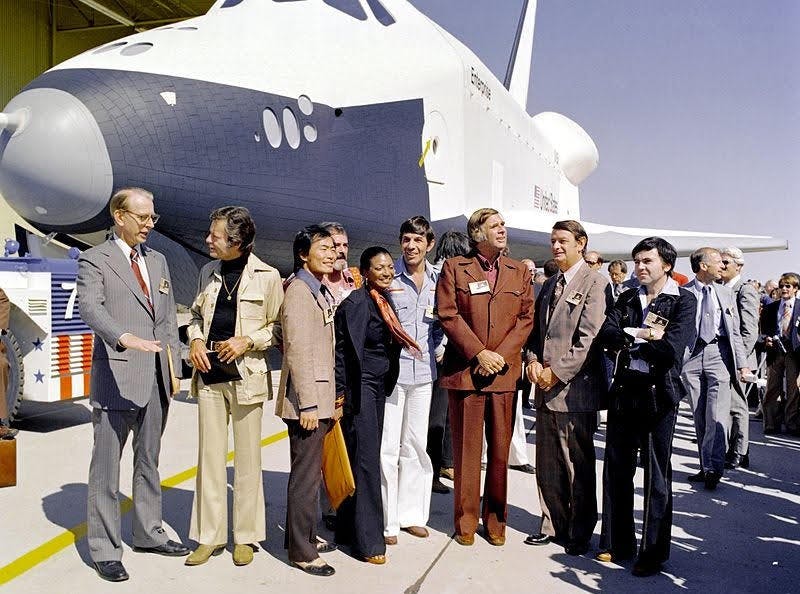
NASA
After NASA’s successful Moon Landing mission — the result of tireless efforts by 400,000 people over a decade — Roddenberry and his team of writers redoubled their efforts to incorporate into Star Trek even more problem solving, effective communication, international cooperation, openness to others, and respect for science. These are qualities every good astronaut — and starship crew — shares.
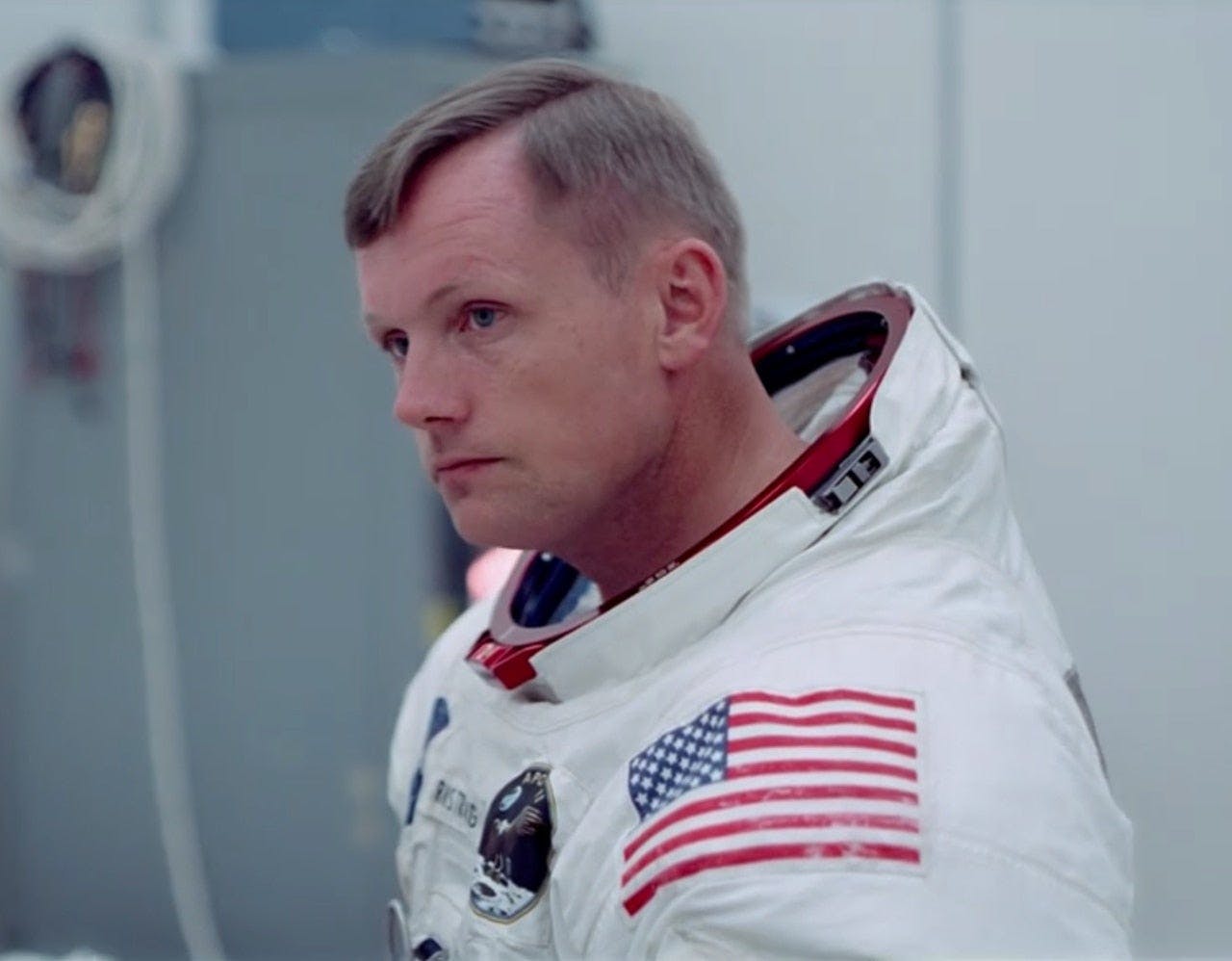
NASA
Apollo 11 commander Neil Armstrong often noted how the “space race” between the United States and the Soviet Union allowed “both sides to take the high road with the objectives of science, and learning, and exploration. Eventually, [the 1960s space race] provided a mechanism for engendering cooperation between former adversaries.” When the U.S. and the U.S.S.R. were able to work together with other nations to build the International Space Station, it offered proof that adversarial humans can still cooperate on big, important projects.
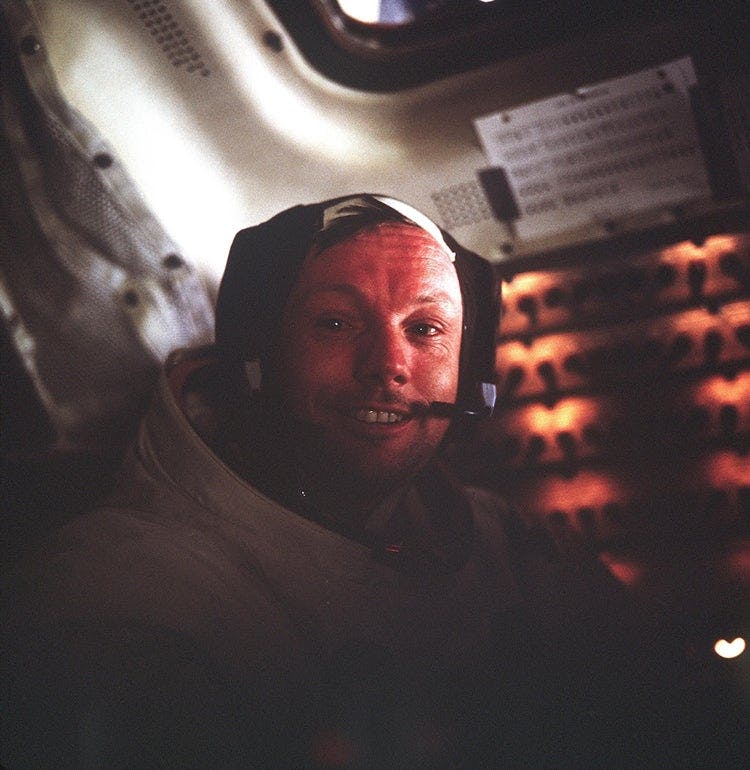
NASA
Star Trek: Voyager channeled NASA’s international cooperation message into “Blink of an Eye,” an episode about Captain Janeway’s crew helping people from an alien world through a challenging first contact during a spacetime differential. Spinning at a blazing 58 rotations per minute, this planet’s experience of time passing happens much faster than on Voyager, now trapped by its intense gravitational pull. Hunter-gatherers when Voyager arrived in orbit, the inhabitants of this planet have evolved in a relative “blink of an eye” to building and deploying telescopes and spacecraft. Essentially, it’s as if our Earth history progressed from Neanderthals to astronauts in about an hour’s time.
All this technological development was influenced over millennia on the planet by curiosity about the “sky-ship” Voyager. Astronaut Gotana-Retz, played by South Korean actor Daniel Dae Kim, represents his planet’s desire to help stop the destructive earthquakes due to Voyager’s mass creating a “third pole.” Despite the challenges of the spacetime differential, Gotana-Retz’s planet and Janeway’s crew are able to work together to solve the problem. The episode reinforces Armstrong’s message about how forward-thinking worlds can work together to solve serious issues.

StarTrek.com
In 1969, when Apollo 11 landed on and returned safely from the Moon, fascinated people around the world watched the mission’s progress on television (sort of). In fact, CBS had created a terrestrial set that deployed actors in space suits to represent the astronauts moving on the Moon because video images were too digitally huge to be sent back to Earth. However, while the video was a simulation, the radio messages from NASA’s astronauts were absolutely real. Every human space travel story is a radio story because radio waves travel at the speed of light, making it possible for astronauts to communicate rapidly with Mission Control from thousands of miles away.
Star Trek: Voyager’s “One Small Step” episode captures this dynamic as former Borg Seven of Nine, while performing a salvage operation, plays the final logs of early Mars Mission command module astronaut Lieutenant John Kelly. In 2032, Kelly had been orbiting Mars with two astronauts on the surface, much like Collins was orbiting the Moon with Armstrong and Aldrin on the surface. Trapped inside the same graviton ellipse that ensnared Kelly 300 years before, Seven emotionally connects with this astronaut who continued to record logs for 10 more days before dying of hypothermia. Back on the Delta Flyer, Mars Mission history buffs Commander Chakotay and Lieutenant Tom Paris have their minds blown while listening to this absolute treasure of lost log entries. I always cry during the final scene when Voyager’s crew, having finally escaped the anomaly with Kelly’s logs and body, honor him with a full military burial. This powerful episode reminds lovers of space travel how resourceful astronauts can be in the face of physical danger, as well as how important it is to honor these courageous individuals willing to hazard travel through the stars in search of knowledge. For more on Apollo 11, listen to Season 1 of the 13 Minutes to the Moon podcast from the BBC.
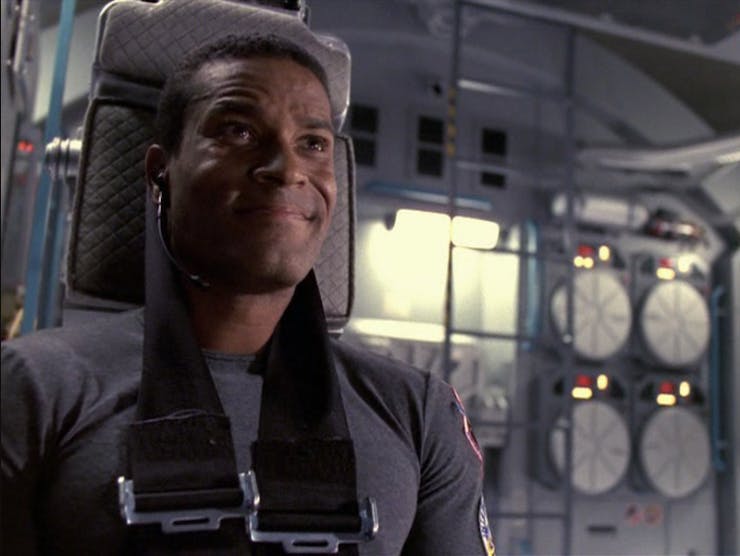
StarTrek.com
While NASA’s influence on Star Trek is clear, Star Trek’s pro-social problem solving sci-fi storytelling with diverse characters likewise inspired — and continues to inspire— NASA engineers, astronauts, and other aerospace experts. On Star Trek: The Pod Directive, Alex Kurtzman explained how his own “first contact” with Star Trek came when he watched this show after-school at the home of a friend whose dad worked at the Jet Propulsion Laboratory in Southern California. Many people in the aerospace industry loved Star Trek as much as Star Trek respected and admired actual space travel professionals.
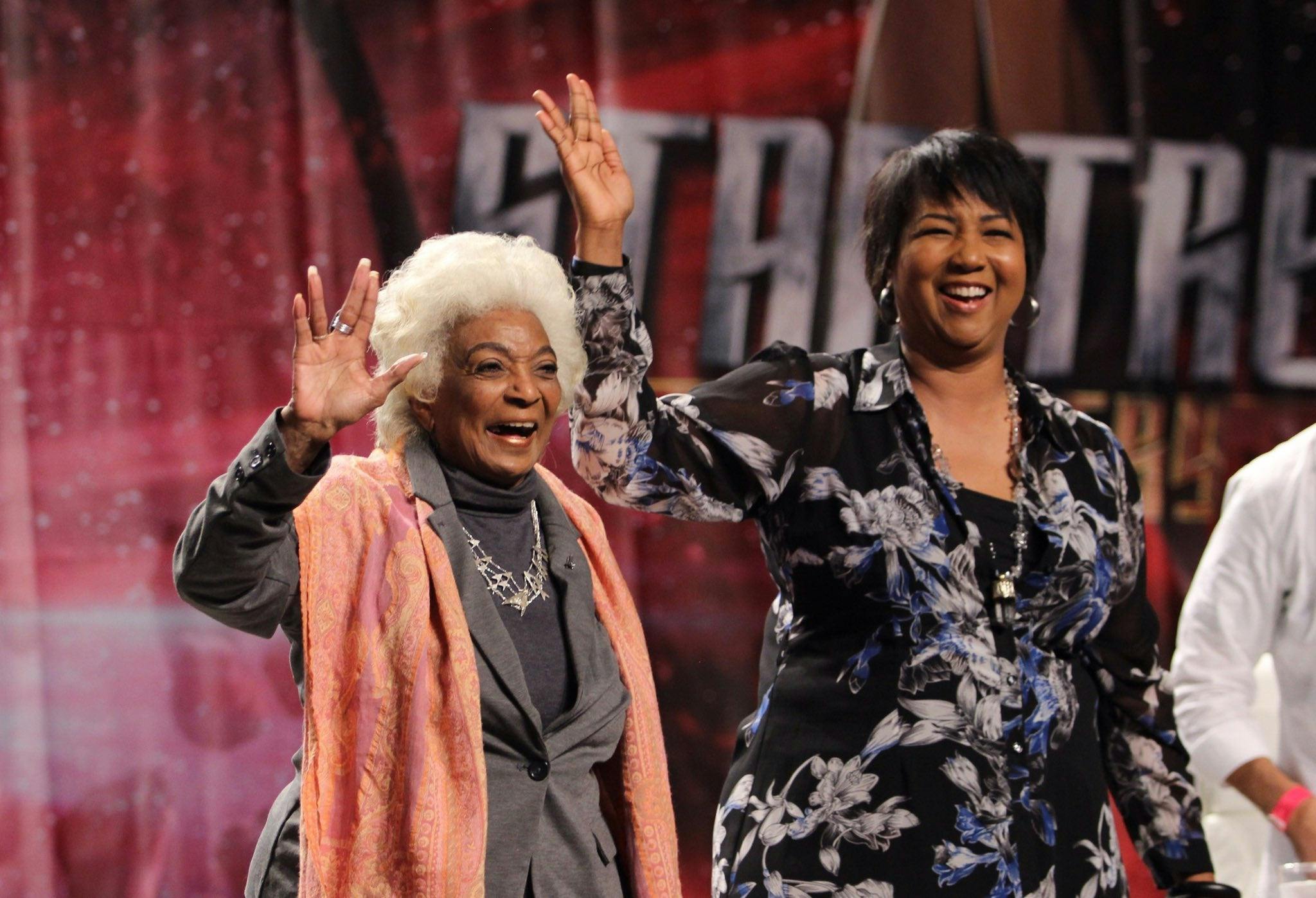
StarTrek.com
Although they eventually opened the job of astronaut to a broader cohort, early on in NASA history, all the astronauts assumed to have “the right stuff” for space travel were white men. NASA approached Star Trek actor Nichelle Nichols for help in attracting more diverse applicants to apply to the astronaut corps such as engineer Dr. Mae Jemison, the first Black woman in space. Star Trek: Voyager (1995-2001) featured one of the most diverse casts in Star Trek history until Star Trek: Discovery’s premier in 2017. Perhaps the Star Trek: Voyager casting decisions, including those for “One Small Step” and “Blink of an Eye” where a Black American actor played a human astronaut and a South Korean actor played an alien astronaut, further helped NASA embrace greater diversity for their astronaut teams. Representation is vital for everyone to feel welcome in a diverse society, including in our country’s space program.
Did you know NASA’s most famous astronaut was also a Star Trek fan? In a 2004 presentation to honor James Doohan upon the actor’s retirement, Neil Armstrong made jokes about Klingons and expressed playful envy about Trek-era warp drive. A huge round of cheers went up in the room when Armstrong said with a Midwestern twinkle in his eye, “I’m hoping for my next command to be given a Federation starship.” On his starship, he would absolutely want a brilliant chief engineer like Scotty. If you love Trek and human spaceflight, it’s really something to see Armstrong’s glee at having spent time with hisStar Trek heroes.
As science officers and captains, Kathryn Janeway and Michael Burnham get the most scientifically-potent settings for their starship stories. Janeway, her crew, and their ship Voyager are flung deep into the Delta Quadrant and must discover a way to travel expeditiously home to Federation space across a 70,000 light-year distance. Burnham, her crew, and their ship Discovery launch themselves into a wormhole to jump 930 years into the future to preserve all sentient life from killer Control. Exploration and empathy are a given for these smart female captains.
Actors Kate Mulgrew and Sonequa Martin-Green, the women who bring us Janeway and Burnham, sat for an interview in 2022 to share more about the intersection of the fictional Star Trek universe and real life. In addition to dismissing the need to contort themselves for the male gaze, Mulgrew noted how moved she has been over the past 25 years that so many women in STEM fields have reached out to her, “A lot of them changed their minds, re-formed, reshaped their opinions and their goals as a result of Captain Janeway. And because I saw it directly, I was deeply and directly affected by it.” Mulgrew came to develop a personal interest in and love for space herself after leading Star Trek: Voyager’s ensemble cast.
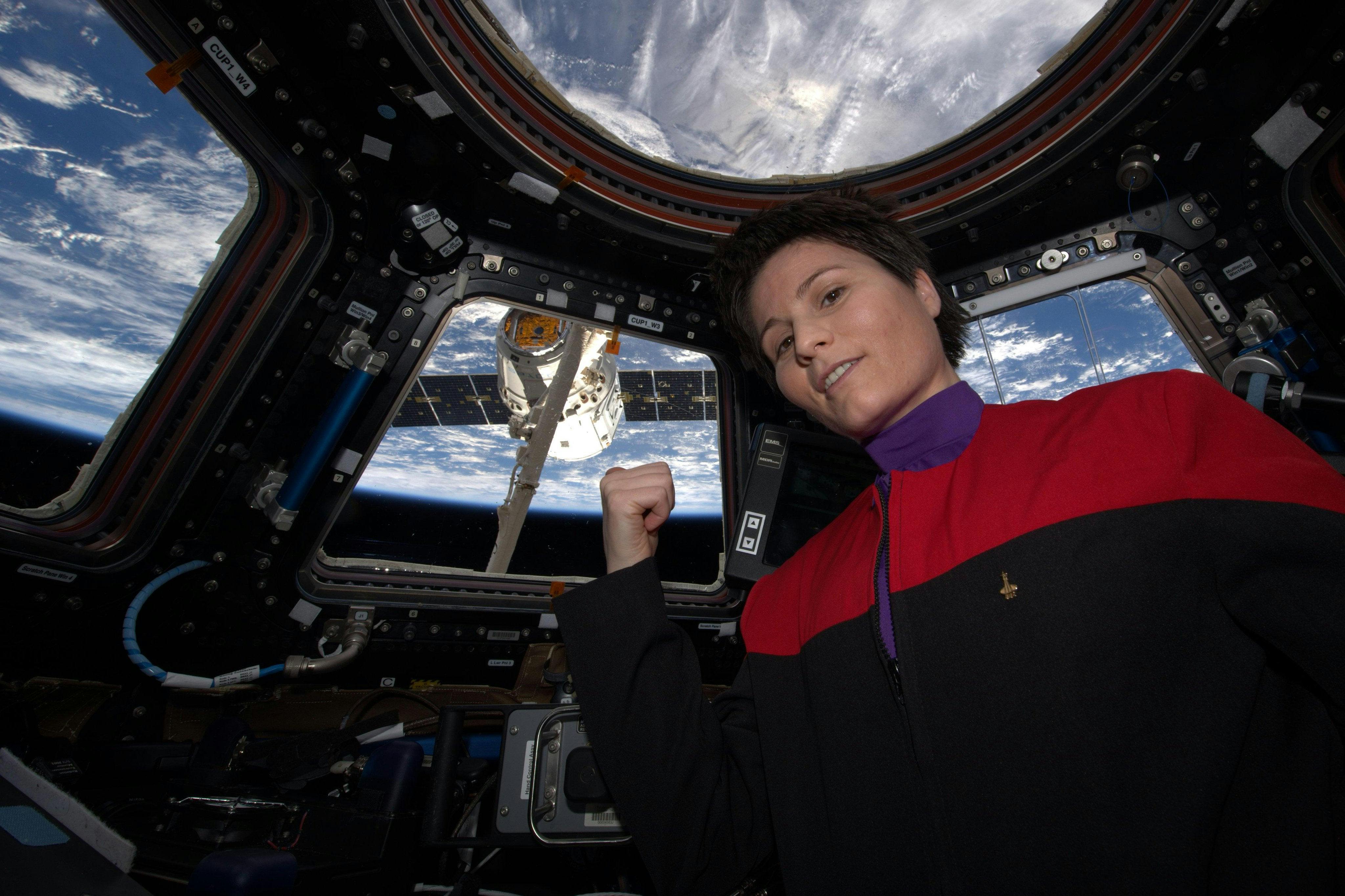
Samantha Cristoforetti
In 1995, Mulgrew gave a special Star Trek gift to the first American woman in space, physicist Dr. Sally Ride — her Voyager communicator badge which, upon Ride’s death, now resides in the National Air and Space Museum in Washington D.C., to continue inspiring visitors to this forward-thinking Smithsonian Museum with the value of space exploration. Dr. Ride had actually attended the Star Trek: Voyager premiere in 1995. In 2015, Italian astronaut Samantha Cristoforetti cosplayed as Captain Janeway anxiously awaiting a coffee delivery to the International Space Station.
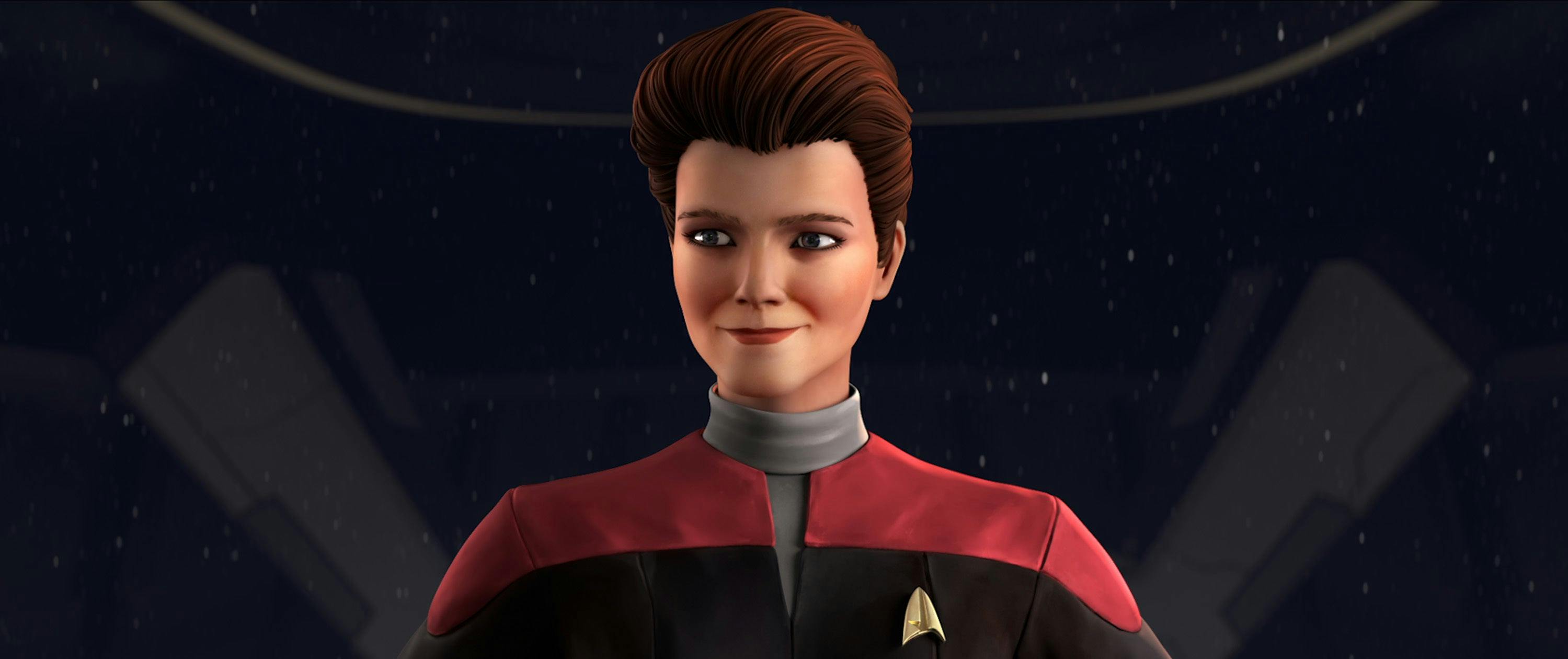
StarTrek.com
The reverberation of Kate Mulgrew’s performance and inspiration as Voyager’s Janeway continues to inspire. This actor brings her love of space travel and exploration to her role in Star Trek: Prodigy, where Hologram Janeway helps train the unseasoned captain Dal of the U.S.S. Protostar by telling him about the problem-solving skills of NASA astronauts on the ill-fated Apollo 13 Mission. Astronauts have lessons to teach us about perseverance, curiosity, and space travel joy. Any time I need some motivation to be more curious, bold, and brave, I watch these NASA-influenced episodes to channel the courage of my Apollo 11 heroes.
Writer R. A. Duchak (she/her) was in utero when Armstrong and Aldrin walked on the moon, and she’s been a space nerd ever since. She has worked as a radio host and producer, university writing instructor, webmaster, editor, and Outward Bound instructor. You can find her on Twitter @ccfoodie.
